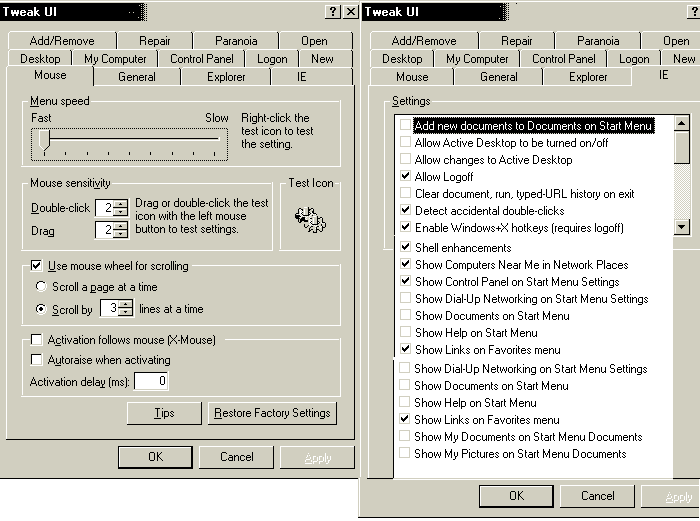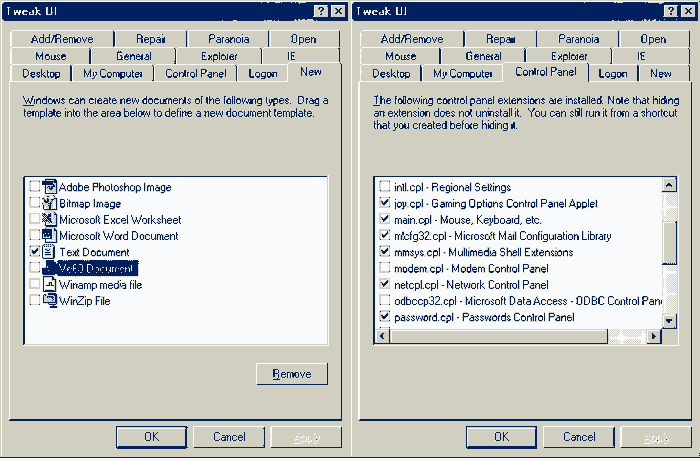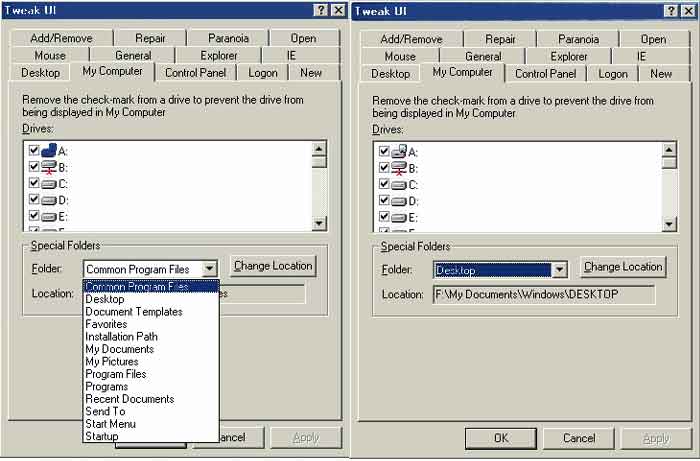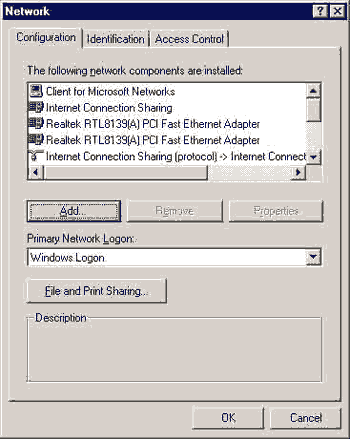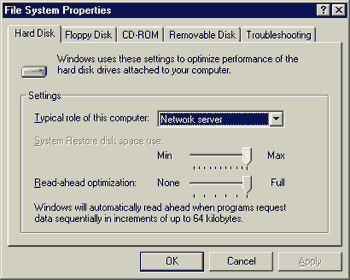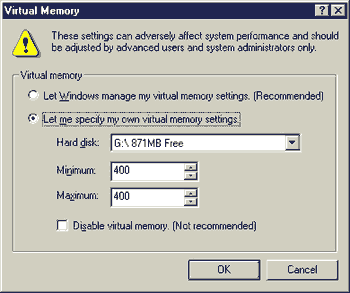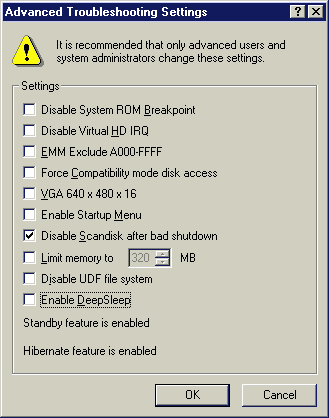|
Introduction Over the course of a few months, computers get slower and more sluggish. Your first instinct is that you have to upgrade the drives, processor or ram. In most cases, all you really need is to give Windows a major overhaul to speed things up considerably. This article will be broken down into sections. You may take all, some, or none of my advice. This is what works for me, but unless your prepared to have your computer self-destruct on you, don't do any of this because I won't take responsibility if your machine won't boot. Like every article on the web, your on your own. Windows Installation I am a firm believer for a fresh Windows installation every 6-12 months. That means format the C: drive and starting fresh. If you follow my procedures later on, this isn't as bad as it sounds, but If you have never done it before, this is a major step, and should be attempted without knowing someone who can help you if things get rough. If you going to do this, it's important to make a list of all your hardware, know the venders, and download all updated drivers before doing anything. You have to assume you cannot get your internet access back when you need it, and you have to be ready for anything. This article isn't about installing Windows, so I am not going to into too much detail about it. I'll save that for another day. TweakUI
I'm just going to hit upon some of the basics first. This is TweakUI for WinME. It's available for all versions of Windows, and while they all look different, all the basic functions are there. On the left, you want to speed up the menu, and turn on your mouse wheel. On the right, these settings should give you major improvements if you turn off that active desktop that noone uses anyways (remember those old MS ads? They showed that WEB tab, with the slogan 'This changes everything." It sure did alright, slowed things down to a snails pace, is what it did.)
On the left, you can turn all these off. I only keep the new text file option. Who would need a new Ve60 Document is beyond me. On the right, you can get rid of all the ones you don't want. Or keep them, it doesn't matter.
This
is a big one, so pay attention. I don't know of anyone who uses this
feature, but I think it's great. What this tab allows you to do, is
place all your personal windows settings anywhere else you want. For
example, I have remapped all my Favorites, Desktop, Start Menu, all
of it, to a completely different drive other than C:. Why? Because if
I format my C: drive (as suggested above) All I have to do is remap
back to these folders. I'll never loose all my stuff if I have to reinstall
windows. This type of setup is fantastic if you use programs like Drive
Image or Ghost. You will never lose your most up to date setups... think
about it.
This is your network settings. Here, you have a choice. If you want to go all Hard Core, select "Client for Microsoft Networks". For most people though, I would actually suggest Windows Logon, as shown above. The difference is, when windows boots up, the "Windows Logon" option won't give you that useless Name and Password junk when you boot your computer. Windows will just boot right up without pausing. Since most people only use one desktop, this makes the most sence. Another option is to set it in TweakUI, but I have found that in WinMe it paused anyways.
From your System Properties, click on File. Under the File System Properies, change the role of the computer to be a network server, and make the Read Ahead set to Full. Under the Troubleshooting tab, I recommend you disable the System Restore, if you have WinMe. Basically, what it does, is make snapshots of your computer all day long. This eats up resources while you are using the computer, and it also eats up ALOT of drive space. Set on Minimum it will eat up hundreds of megabytes on drive C. Besides, when you need this function the most, it won't even work. But, that's my suggestion, if you would rather have the mental security of leaving this on, then by all means, leave it on.
There is also a Virtual Memory tab. Use that to change the Scratch Disk size. Set it for something between 200 and 400 megs. They say it should be like double you ram or something like that, but it's mostly speculation, and probly won't make much difference. Next, you can close all that up and go here: Start-Programs-System Tools (or similar, you may have accidently moved it something). Basically, your looking for a System Information in your Start Menu. Once that loads, under the Tools drop down Menu, then System Configuration Utility. Click the Advanced button. Buried inside all that nonsence, is a check box to Disable ScanDisk. That is the most annoying garbage. Turn it off, run the program manually once a week, and you'll be fine.
This program is really neat. While, there are other ways of achieving the same result, this program makes it really easy to do. This is a list of all the programs that load when your system boots up. StateMgr is your System Restore program. Even though I have it turned off, I still need this program to load. If I take it out, Restore will default to MAX and eat up hundreds of megs. Tablet is a driver for my Wacom Pen Tablet. ScanRegistry should be left in. While you CAN take it out, the registry never gets a chance to check itself, and you may have worse problems down the road. TweakUI restores settings I made in the program, so that has to stay. ICSMGR is the Internet Connection Sharing Manager which I use to connect my 2 computers into the 1 cable modem. CPUIdle slows down my processor chip when it's not in use. By doing this, it reduces the heat generated inside the case, and gives the chip a longer lifespan. FileBox is a neat little program that saves pre-designated folders. Perfect Screens allows me to have multiple desktops. For example, one has all utilities, another has all web stuff, another for games...I use so many programs, this makes for the ultimate in organization. Shove-It keeps all open windows on the screen. Have you had a window open-up, but it's somewhere off the screen? This program fixes that. Transparent makes the type under the desktop icons see through. So, If you have a picture, you don't get the solid blocks of type. The last one is WinSize, and this program opens windows up in the same positions on the screen all the time. What this lets you do, is always open your C drive in a medium sized window, while always opening your download folder in a big window.
If you have a high-speed modem, this is the program for you. I know, you probably have never even heard of it. Basically, it works like other download managers where you can tag files, and it won't stop until it downloads the thing, even if it takes 100 tries. What makes this program so special, is that it doesn't just download a file once, it actually splits that file into 10 pieces and downloads them all at the same time. See in the picture how it downloaded 38 megs in 27 seconds? that's real folks. In this picture, I am getting 518k per second, but I actually go faster than that. In fact, I can download 8 files at the same time, downloading 10 pieces each, so in actuallity, I am downloading 80 files at the same time, and this bad boy puts them all back together again. This is one of the most amazing pieces of software I have.
Here are few simple, easy to make changes that will boot windows 10-25 seconds faster. No, I shit you not. I would tell you what they mean, but I'm sure you don't really care. In
your config.sys file, add the line stacks=0,0
Every
Windows installation dumps a HUGE pile of crap onto your system. The
new WinXP will eat up 1.4 GIGS if you let it. But why should you? Reclaim
hundreds of megs with little or no effort. As long as you know what
can go, it's easy. First, here is a link to a text
file which lists everything in a fresh WinMe installation. Second,
is a link to a text file which
shows a fresh installation's folder structure. Third, is a link to a
text file which lists everything that can be safely deleted. While
this last text file lists every file, you can safely toss away the whole
folders. In the end, I threw away 216 megs from a fresh install. Just
think of all the help files, temp files and extra junk that can be tossed
if it's an old install.
Read the article in full, follow my advice, and your machine will run faster, smoother, and more solidly than it ever has. My WinMe installation rarely gives me crashes or problem. By eliminating the useless crap, your machine will run much better. Of course, a P4-1.8ghz with 256ram and a GF3 would help too :) |
||||||||||||||||||||
|
||||||||||||||||||||
|
(c)
-=LRK=- and SubDivisions
|
||||||||||||||||||||
